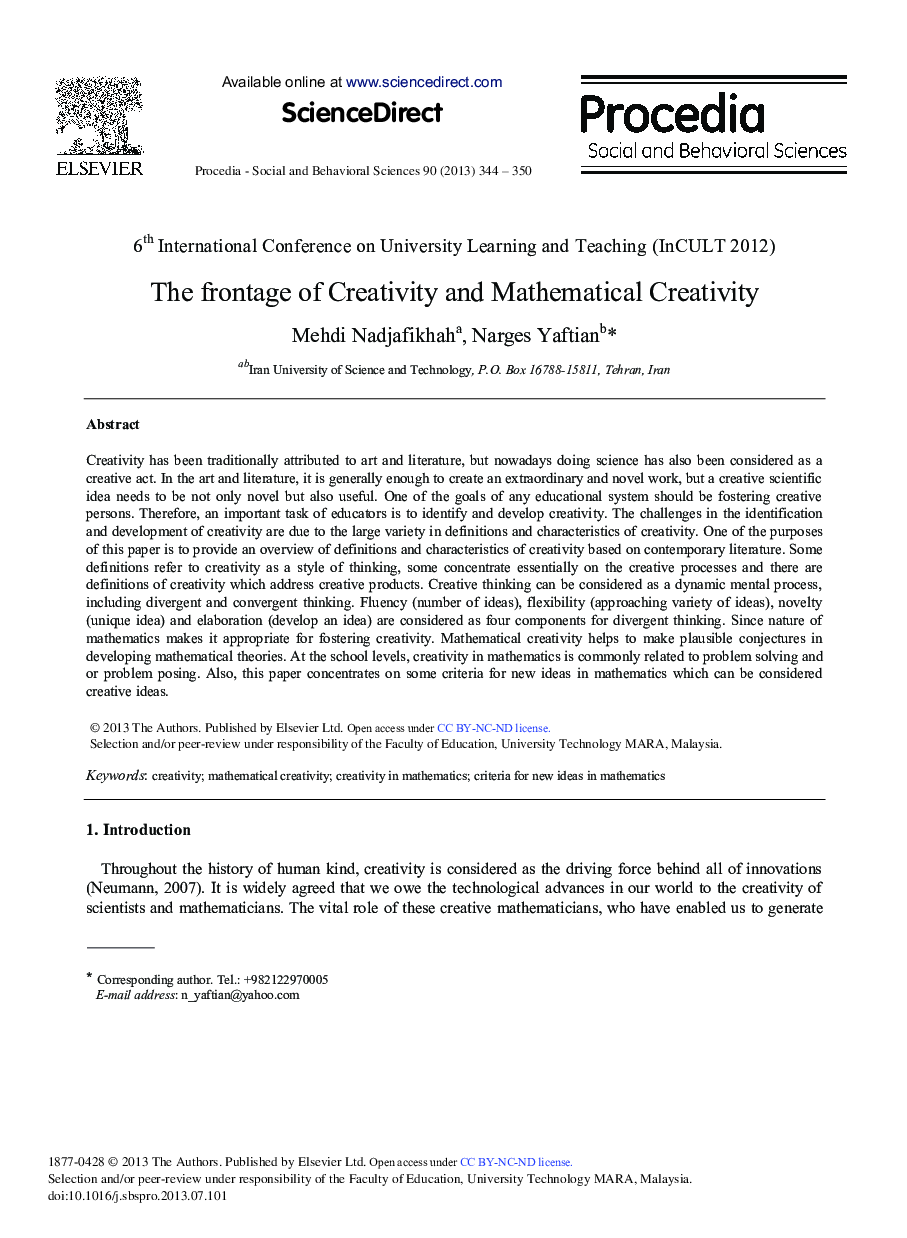| کد مقاله | کد نشریه | سال انتشار | مقاله انگلیسی | نسخه تمام متن |
|---|---|---|---|---|
| 1116400 | 1488469 | 2013 | 7 صفحه PDF | دانلود رایگان |

Creativity has been traditionally attributed to art and literature, but nowadays doing science has also been considered as a creative act. In the art and literature, it is generally enough to create an extraordinary and novel work, but a creative scientific idea needs to be not only novel but also useful. One of the goals of any educational system should be fostering creative persons. Therefore, an important task of educators is to identify and develop creativity. The challenges in the identification and development of creativity are due to the large variety in definitions and characteristics of creativity. One of the purposes of this paper is to provide an overview of definitions and characteristics of creativity based on contemporary literature. Some definitions refer to creativity as a style of thinking, some concentrate essentially on the creative processes and there are definitions of creativity which address creative products. Creative thinking can be considered as a dynamic mental process, including divergent and convergent thinking. Fluency (number of ideas), flexibility (approaching variety of ideas), novelty (unique idea) and elaboration (develop an idea) are considered as four components for divergent thinking. Since nature of mathematics makes it appropriate for fostering creativity. Mathematical creativity helps to make plausible conjectures in developing mathematical theories. At the school levels, creativity in mathematics is commonly related to problem solving and or problem posing. Also, this paper concentrates on some criteria for new ideas in mathematics which can be considered creative ideas.
Journal: Procedia - Social and Behavioral Sciences - Volume 90, 10 October 2013, Pages 344-350